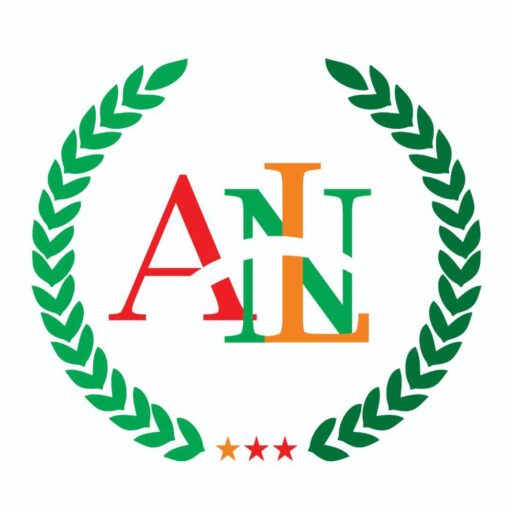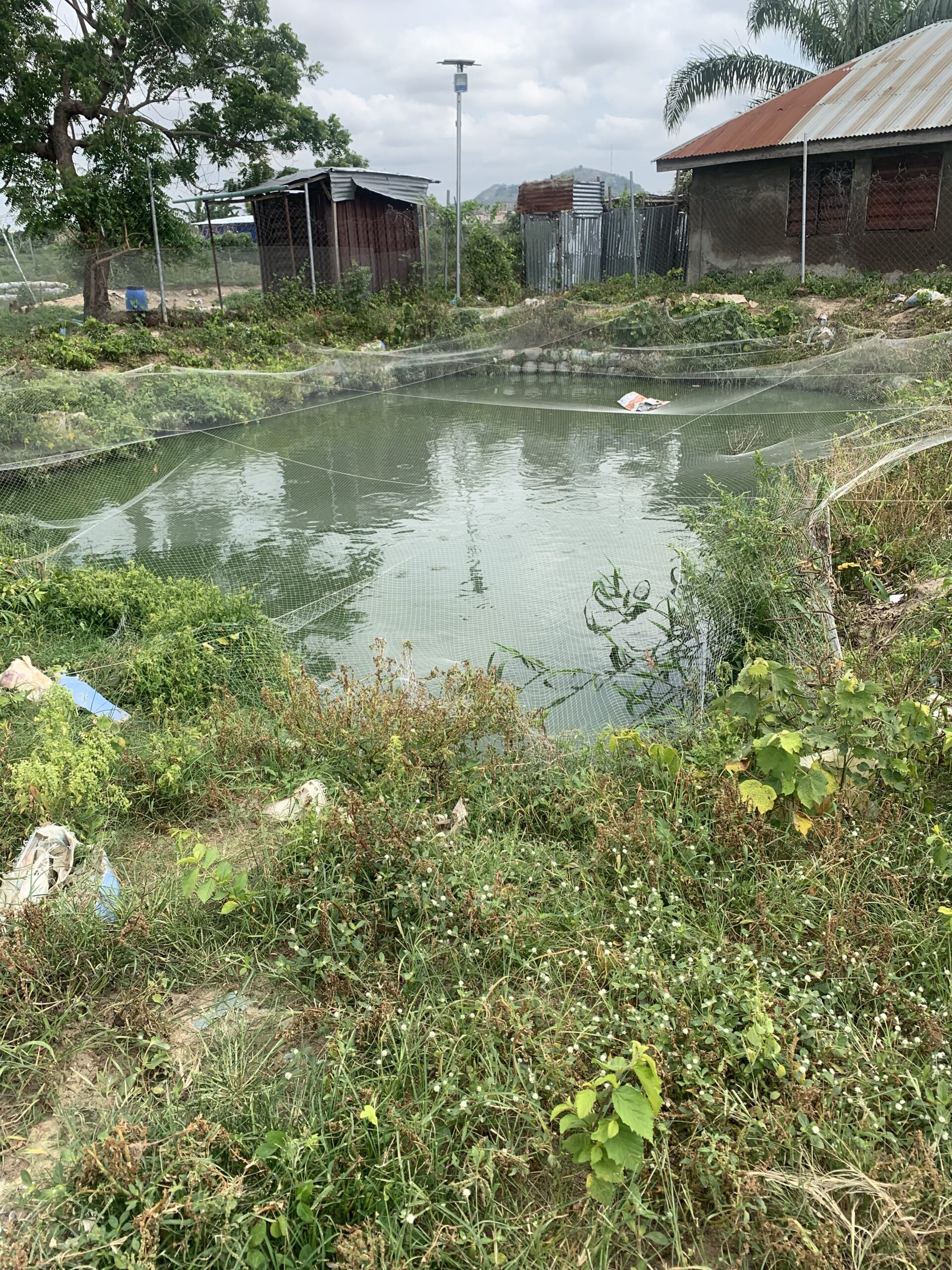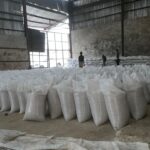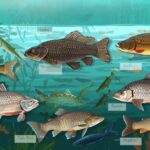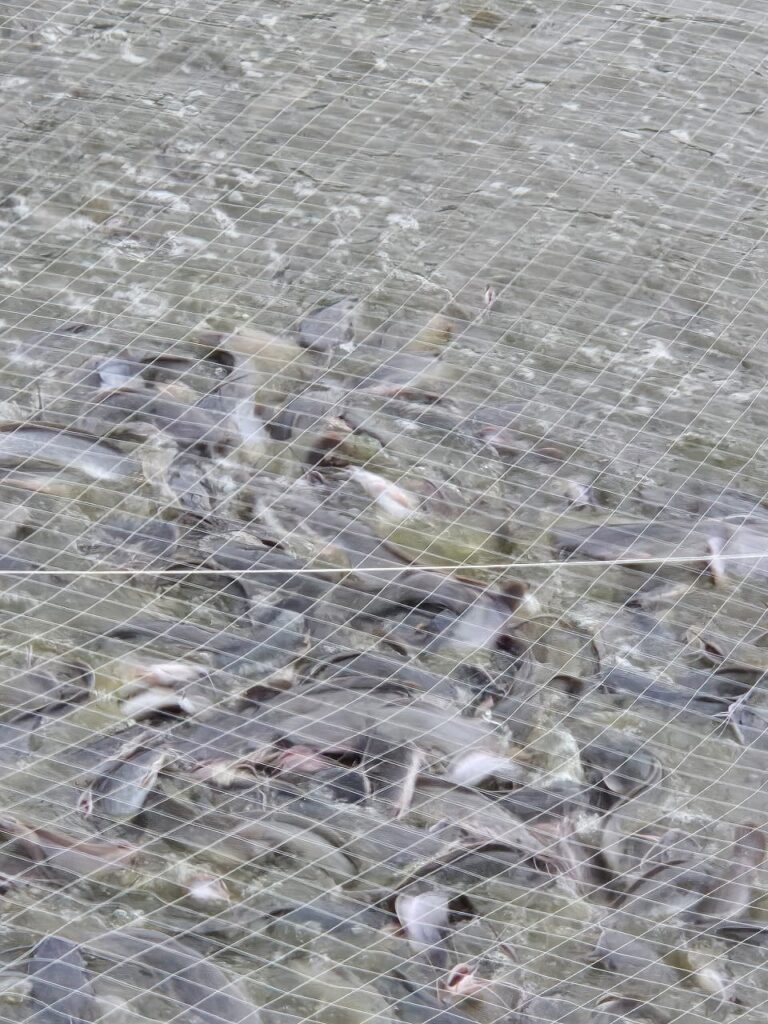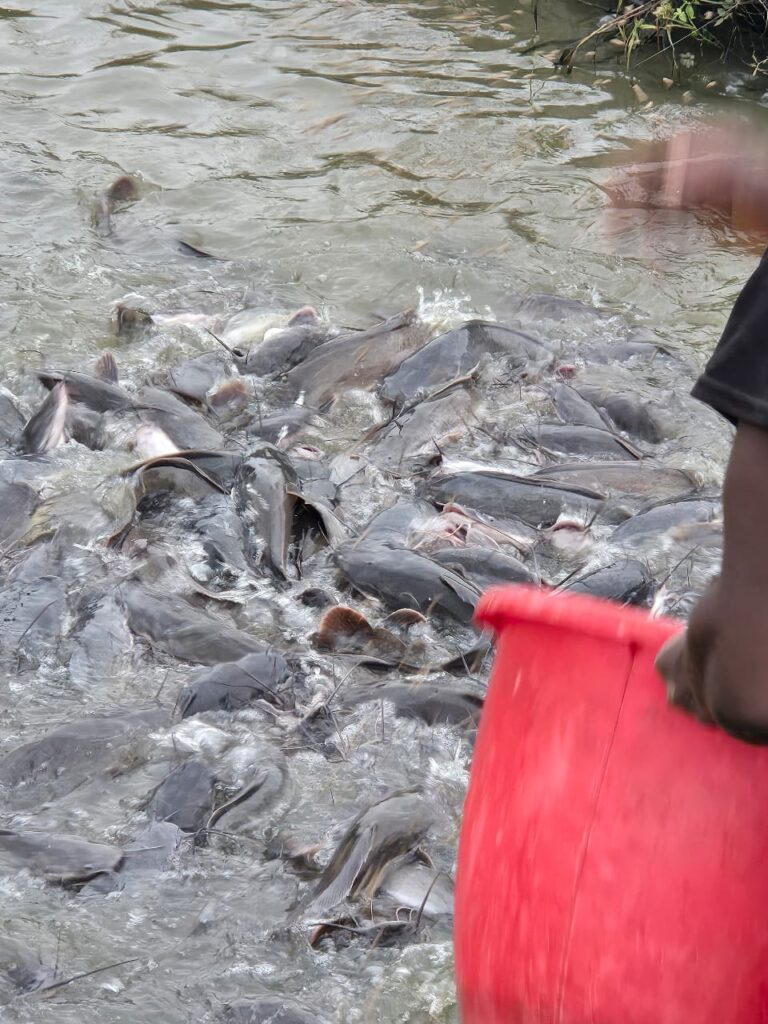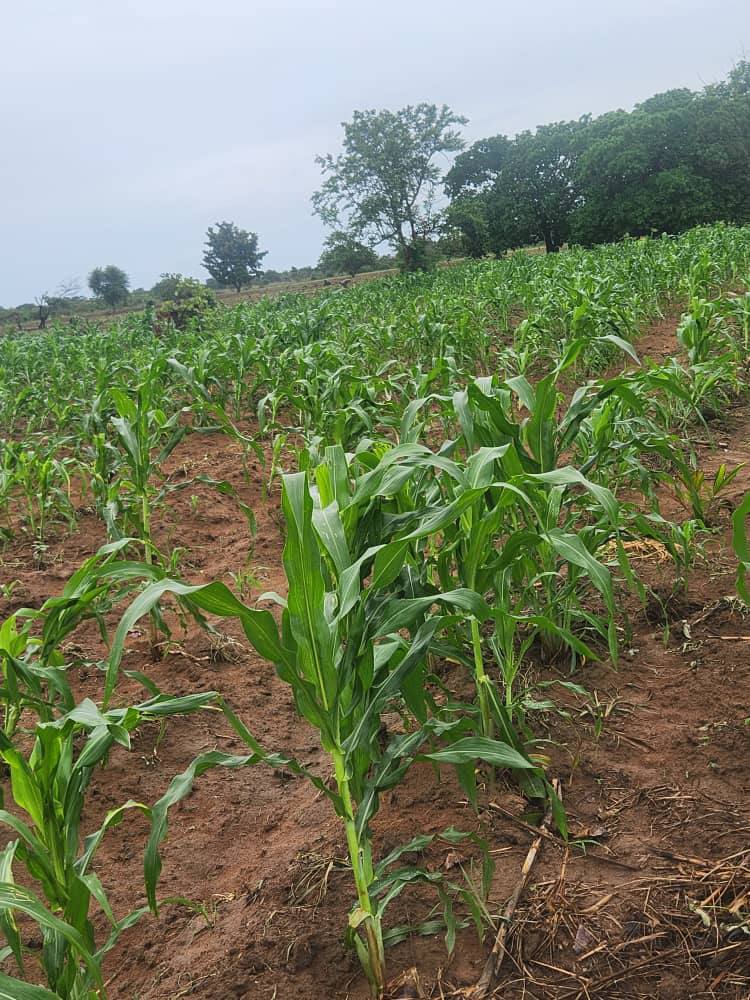Fish pond management is one of the backbones of a successful aquaculture in Nigeria. Whether you are raising catfish, tilapia, or other species, the way you manage your pond determines the overall health of your fish, their growth rate, and the profitability of your farm. Good pond management goes beyond just building a pond and …
Fish pond management is one of the backbones of a successful aquaculture in Nigeria. Whether you are raising catfish, tilapia, or other species, the way you manage your pond determines the overall health of your fish, their growth rate, and the profitability of your farm.
Good pond management goes beyond just building a pond and stocking it with fingerlings. It involves proper fish pond maintenance, water quality control, feeding practices, and disease prevention—all of which contribute to sustainable production. When farmers invest in best practices, they reduce mortality, improve feed conversion, and ultimately enjoy higher yields and profits.
However, many fish farmers still struggle with common challenges such as poor fish pond water quality management, overstocking, lack of technical knowledge, and unreliable feed supply. These challenges can limit productivity if not properly addressed.
This guide provides a complete overview of fish pond management in Nigeria, highlighting the essential steps farmers should take to achieve long-term success in aquaculture.
Basics of Fish Pond Management
At its core, fish pond management refers to the planning, organisation, and daily practices required to keep a fish pond healthy and productive. It covers every aspect of pond operation, including water quality, feeding, stocking, cleaning, and disease control.
For small-scale fish farmers, effective pond management is essential to maximise limited resources and ensure that each fish reaches its full growth potential. On the other hand, for large-scale aquaculture ventures, good management ensures efficiency, reduces losses, and keeps the business profitable in the long run.
Applying the best practices for fish pond management means focusing on:
-
Maintaining clean and healthy water.
-
Feeding fish with the right quantity and quality of feed.
-
Stocking at the right density to prevent overcrowding.
-
Regular monitoring of fish behaviour and growth.
-
Preventing and managing diseases before they spread.
Whether you run a small backyard pond or a commercial farm, these practices are the foundation for sustainable aquaculture and long-term profitability.
Fish Pond Construction in Nigeria
One of the first and most important steps in aquaculture is fish pond construction in Nigeria. A well-built pond creates the foundation for healthy fish growth, effective water management, and long-term farm success.
Key steps in building a fish pond
-
Site Selection—Choose a location with a reliable water supply, good soil type (preferably clay to prevent seepage), and accessibility for feeding and harvesting.
-
Design & Layout—Plan the pond size and depth based on the type of fish you intend to farm, whether catfish, tilapia, or other species. Proper drainage and inlet systems should be included to allow easy water replacement.
-
Materials & Construction—Use durable materials such as clay soil, liners, or concrete to ensure the pond retains water effectively. The pond should also be fenced or protected to prevent predators and erosion damage.
Common mistakes to avoid during pond construction
-
Building ponds on unsuitable soil that cannot hold water.
-
Poor drainage systems make it difficult to replace water or remove waste.
-
Overstocking ponds due to poor size estimation.
-
Ignoring water inlet filtration leads to contamination and disease risk.
A carefully planned fish pond construction in Nigeria not only reduces future maintenance costs but also ensures a productive and sustainable aquaculture system.
Fish Pond Maintenance Essentials
Building a pond is just the beginning—keeping it in good condition requires consistent fish pond maintenance. Regular upkeep helps prevent water pollution, disease outbreaks, and structural damage that could reduce productivity.
Key practices in fish pond maintenance
-
Regular Inspection and Repair – Check embankments, inlets, and outlets frequently to spot leaks, erosion, or blockages early. Prompt repairs save farmers from bigger losses later.
-
Weed and Algae Control – Excessive weed or algae growth competes with fish for oxygen and nutrients, while also creating breeding grounds for pests. Farmers should remove weeds manually or use safe control methods.
-
Predator Management—Birds, snakes, and other predators can drastically reduce fish stock. Fencing, netting, or scare tactics help protect the pond.
-
Waste Management—Periodically remove sludge and uneaten feed from the pond bottom to keep water clean and oxygen levels balanced.
Consistent fish pond maintenance ensures that fish remain healthy, water quality stays stable, and the pond structure lasts longer—making aquaculture more profitable and sustainable.
Fish Pond Water Quality Management
One of the most critical aspects of successful aquaculture is fish pond water quality management. The water environment directly affects fish health, growth rate, and overall survival. Even if a farmer uses high-quality feed and proper stocking techniques, poor water quality can result in stunted growth, disease, or mass fish mortality.
Key water quality parameters every farmer should monitor
-
Oxygen Levels—Fish need dissolved oxygen to survive. Low oxygen can cause stress, slow growth, or sudden fish deaths. Aeration or water exchange is often required to maintain adequate levels.
-
pH Levels—The ideal pH for most fish ranges between 6.5 and 8.5. Extreme acidity or alkalinity stresses fish and can reduce feed efficiency.
-
Temperature—Fish are cold-blooded, so their metabolism and feeding depend on water temperature. Sudden fluctuations can weaken immunity and increase mortality rates.
-
Ammonia Concentration – Accumulation of waste and uneaten feed increases ammonia, which is toxic to fish. Regular cleaning and water replacement help keep it under control.
Effective fish pond water quality management helps farmers create a stable environment where fish thrive, feed is converted efficiently, and yields remain high.
Fish Pond Stocking and Feeding
Proper fish pond stocking and feeding are two of the most important factors that determine the success of aquaculture. Stocking sets the foundation for healthy fish growth, while feeding ensures they reach their full potential.
Best stocking practices
-
Species Selection – Choose fish species that adapt well to local conditions, such as catfish or tilapia, which are widely farmed in Nigeria.
-
Timing—Stock fingerlings during favourable weather conditions to reduce stress and mortality.
-
Fingerling Quality—Only buy fingerlings from trusted hatcheries to avoid diseases and ensure good survival rates.
-
Stocking Density—Avoid overstocking as it leads to poor growth, oxygen depletion, and disease outbreaks.
Feeding practices for better growth
-
Provide high-quality feed suitable for different growth stages (fingerlings, juveniles, and growers).
-
Stick to a consistent feeding schedule—ideally 2–3 times daily, depending on fish size and age.
-
Avoid overfeeding to prevent waste buildup and water pollution.
-
Use floating pellets where possible, as they make it easier to monitor feed intake.
When properly done, fish pond stocking and feeding create a balanced environment that maximises growth, reduces mortality, and improves farm profitability.
Common Challenges in Fish Pond Management
While aquaculture offers huge opportunities in Nigeria, many farmers still face difficulties that affect their productivity and profits. Understanding the common challenges in fish pond management helps farmers prepare and find lasting solutions.
1. Poor Water Quality
Unstable water conditions, such as low oxygen, high ammonia, or extreme pH, can stress fish and lead to mortality. Many farmers fail to invest in proper water monitoring and management systems.
2. Inadequate Feeding
Using low-quality feed, feeding irregularly, or overfeeding are major issues that result in stunted growth and financial losses. Balanced feeding is key to profitable aquaculture.
3. Diseases and Parasites
Bacterial, fungal, and parasitic infections can quickly spread in ponds if not managed properly. Lack of preventive care and poor hygiene often make the problem worse.
4. Market and Cost Challenges
Rising costs of fish feed, fingerlings, and pond maintenance often affect small-scale farmers. In addition, fluctuating fish market prices can reduce profitability.
These common challenges in fish pond management highlight the importance of adopting best practices, investing in quality inputs, and seeking technical support to keep farms sustainable and profitable.
Fish Pond Cleaning and Treatment
A healthy pond environment is vital for successful aquaculture, which is why fish pond cleaning and treatment should never be overlooked. Over time, fish ponds accumulate waste, uneaten feed, and sludge at the bottom, all of which can pollute the water and harm fish health if left unmanaged.
Importance of Regular Cleaning:
-
Removes harmful waste buildup that lowers oxygen levels.
-
Prevents the spread of bacteria, fungi, and parasites.
-
Improves water quality, ensuring better growth and survival of fish.
-
Extends the lifespan of the pond structure by reducing erosion and damage.
Safe Treatment Options for Fish Ponds:
-
Lime Application – Applying agricultural lime helps balance pH, kill harmful organisms, and improve pond fertility.
-
Salt Treatment – Common salt can be used to control parasites in certain cases, but it must be applied in correct doses.
-
Organic Methods – Sun-drying the pond bottom after draining helps disinfect and prepare the pond for the next cycle.
-
Water Exchange – Regularly replacing part of the pond water helps reduce ammonia buildup and maintain good water quality.
Consistent fish pond cleaning and treatment ensure a safe environment where fish can thrive, reduce disease risks, and promote sustainable aquaculture practices.
Sustainable Fish Pond Management in Nigeria
In today’s aquaculture industry, farmers are increasingly turning to sustainable fish pond management practices to ensure long-term success. Sustainability means running fish farms in a way that protects the environment, supports healthy fish growth, and guarantees consistent profitability.
Eco-friendly practices in aquaculture pond management in Nigeria
-
Efficient Water Use – Recycling and reusing pond water, while ensuring proper treatment, reduces waste and conserves resources.
-
Use of Quality Feed – Choosing premium feed that improves feed conversion ratio (FCR) minimizes waste and pollution in ponds.
-
Integrated Farming Systems – Combining fish farming with crop or livestock production to reuse nutrients and reduce environmental impact.
-
Reduced Chemical Use – Applying natural treatments, biological controls, and safe pond management methods instead of harmful chemicals.
-
Proper Stocking Density – Avoiding overcrowding ensures better fish growth and reduces stress-related diseases.
Farmers who adopt sustainable fish pond management practices not only protect the environment but also improve productivity and profitability over time. By promoting cleaner water, healthier fish, and reduced costs, these practices strengthen the future of aquaculture pond management in Nigeria.
Conclusion
Effective fish pond management is the foundation of successful aquaculture in Nigeria. From construction and maintenance to water quality, stocking, feeding, and sustainability, every step plays a vital role in ensuring healthy fish growth, reduced losses, and higher profitability.
Farmers who adopt the best practices for fish pond management not only overcome common challenges but also position themselves for long-term success in the ever-growing aquaculture industry.
To achieve the best results, consult aquaculture experts, invest in quality inputs, and follow sustainable fish pond management methods that protect both your farm and the environment.
Start applying these strategies today and watch your fish farm thrive!
